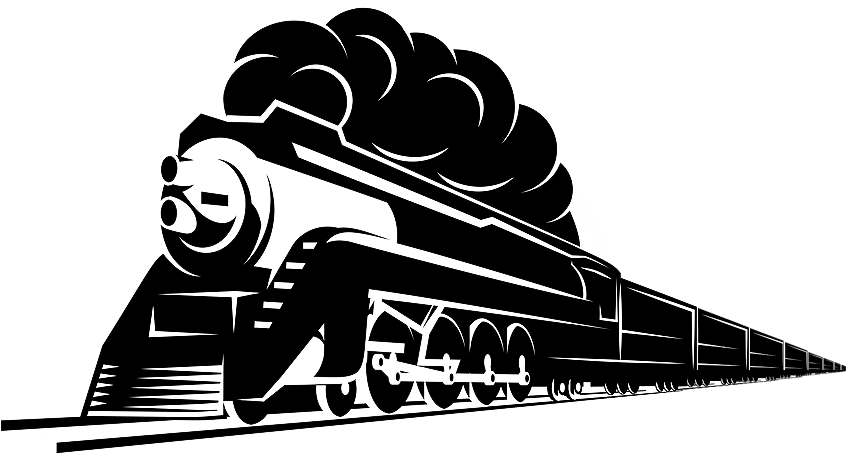"Specialists in American Flyer Trains & S-Gauge Railroading"
888-708-0782 (from US only)
978-465-8798 (International)
Phone calls: 2-5 PM Eastern
Time, Tue-Thu only
AM. FLYER REPAIR CLINICS
CLINIC # 40: diesel motor components ---
Which Field & armature do I need?
NOTE: Credit for much of the technical information summarized below goes to Robert Hannon, whose book, "A.C. Gilbert's Postwar American Flyer S-Gauge Reference Manual" is a remarkable compilation of American Flyer electrical components and their specs. The book is available direct from the author, as well as from Port Lines, for $25 plus shipping.
Each PA, GP-7, and EP-5 motor consists of both a field and an armature. The armature is the part that spins within the horseshoe-shaped field. Over the years, Gilbert changed these components in order to improve their performance. Here are some general guidelines to identify which components should match each engine. The first such diesels appeared in 1950, and continued through 1962.
What's important?
(a) The total thickness of the stacked plates (laminations) of the field should match the total thickness of the armature's stacked plates. If not, you have a mismatched motor, and it will not run well, and may overheat.
(b) The resistance readings of both the field and armature should not only be correct, but should be very similar.
How do you measure the resistance? You'll need an ohmmeter or multimeter.....
Armatures: The armature's copper commutator face is divided into three segments. Touch the two ohmmeter probes to any two of the segments to get a resistance reading. Repeat this for each of the other two combinations of two segments. All three resistance readings should be within 0.1 ohms of each other....anything greater than that indicates a problem with the armature. Moreover, the actual readings should be within 0.2 ohms of the resistance readings listed below.
Fields: Disconnect the field connections from other wiring in the engine. Touch the two ohmmeter probes to the two bare ends of the field winding. Variation from the expected resistance should be no more than 0.3 to 0.5 ohms.
| PRODUCTION YEARS | ARMATURE | RESISTANCE | DESCRIPTION | FIELD | RESISTANCE | DESCRIPTION |
|---|---|---|---|---|---|---|
| 1950 - 1951 | XA11445 | 2.2 - 2.4 ohms | Stacked plates total 18/32" wide. Gaps are skewed (diagonal). Fits PA12C197 diesel chassis. | XA11461 | 2.5 - 2.7 ohms | Stacked plates range from 16/32" to 18/32" wide. Plates are riveted together. Brass strip above them. |
| 1952 - Early 1955 | XA12A062 | 1.9 - 2.0 ohms, or 2.3 - 2.4 ohms | Stacked plates total 22/32" wide. Gaps are skewed (diagonal). Fits PA12B065 diesel chassis. | XA12A064 | 1.8 - 2.0 ohms | Stacked plates range from 19/32" to 20/32" wide. Plates are riveted together. Brass strip above them. |
| Late 1955 - 1957 | XA14B873 | 1.9 - 2.0 ohms | Stacked plates total 17/32" or 23/32" wide. Gaps are skewed (diagonal). Fits PA12B065 diesel chassis. | XA13A036 | 1.8 - 2.0 ohms | Stacked plates are 21/32" wide. Plates are riveted together. No brass strip. |
| 1958 - on | XA14B873 | 1.9 - 2.0 ohms | Stacked plates total 17/32" or 23/32" wide. Gaps are linear. Fits PA12B065 diesel chassis. | XA13A036 | 1.8 - 2.0 ohms | Stacked plates are 21/32" wide. Plates are riveted together. No brass strip. |
AVAILABILITY OF THE ABOVE COMPONENTS:
We typically will have any of the above items in stock, either as used and OK, or as rewound units (which means they are essentially "like new". All rewinds are machine-wound to the correct specs.
Inquire about availability, if you know your specific need.
We also supply a rewind service if you send us your bad armature or field, or can give a core-credit toward an exchange with an identical rewound component.
Your purchase is secure
Satisfaction guaranteed
International shipping
HOME
6 Storeybrooke Drive
Newburyport, MA 01950-3408
Email Doug
888-708-0782 (from US only)
978-465-8798 (International)
Phone calls: 2-5 PM Eastern
Time, Tue-Thu only
All Rights Reserved | Port Lines Hobby Supplies
Website & Hosting by SovoWeb a division of RedXWebDesign

